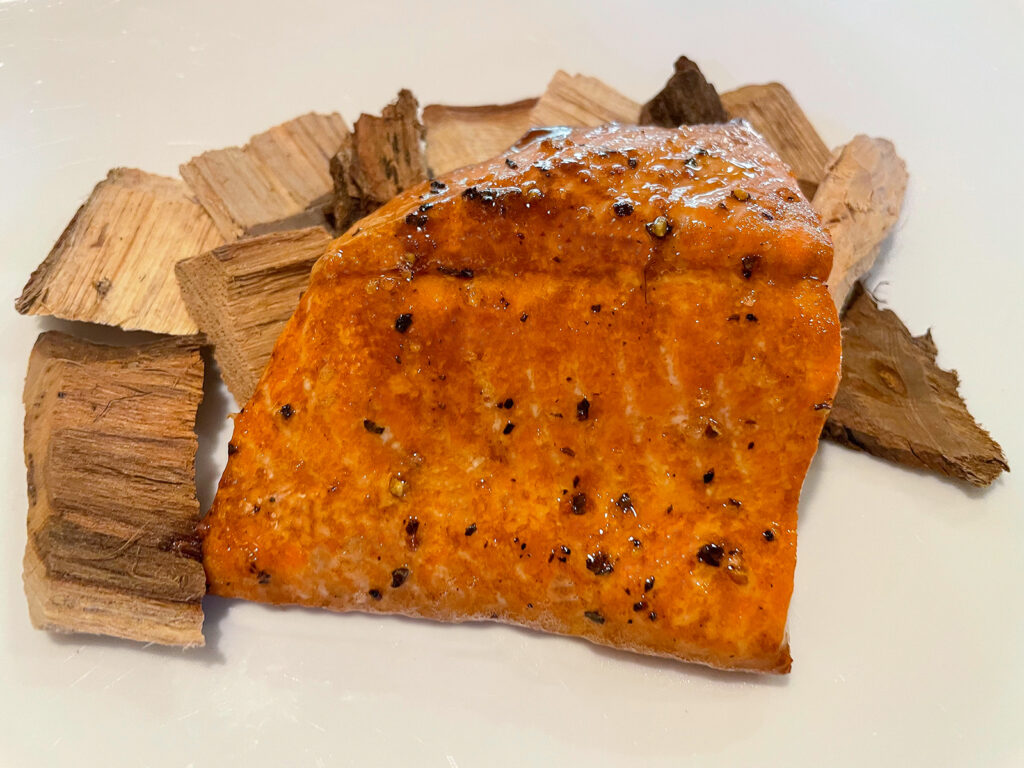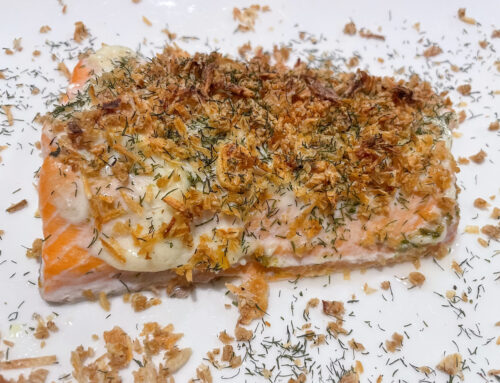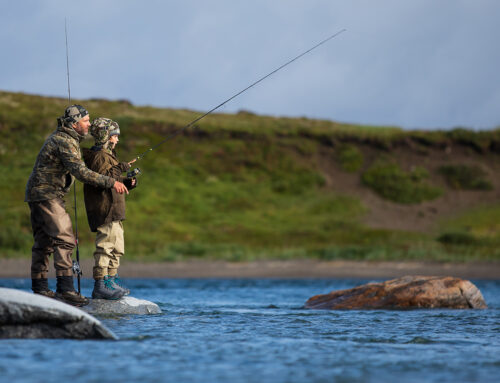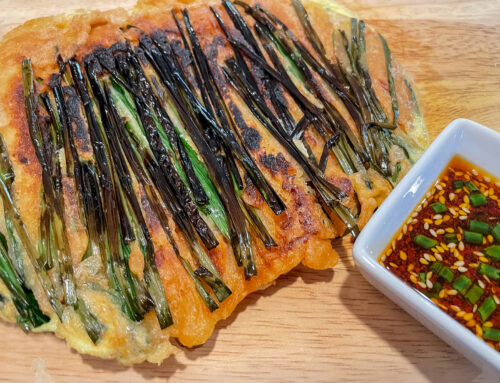
Anglers at Becharof Lodge on Alaska’s Egegik River take home a lot of coho salmon. We’re often asked for some of our favorite recipes. Since so many people enjoy eating tasty coho salmon year-round, we’re all about variety. The more ways you can cook your silver salmon, the more enjoyable the salmon eating experience will be.
Because coho salmon in the Egegik River are only hours from the sea, their fat content is very high. This makes them some of the best eating coho salmon anywhere in Alaska. These salmon haven’t traveled far, and they’re not staging in muddy estuaries. These coho enter Egegik Bay and are at our lodge in a matter of hours, most still carrying sea lice.
Thanks to the high fat content of coho salmon on the Egegik River, they’re excellent eating, no matter how you prepare them. Cheating your way to a delicious smoked salmon is just one option.
A far cry from traditionally hot or cold smoked salmon, using liquid smoke cuts the preparation time for this delicacy by about 90%. Flavorful, moist and buttery, this “smoked” salmon can be served hot or cold, eaten on its own, or flaked over salad, rice or pasta.
If you’ve already got the smoker out, give the salmon 10 minutes of heavy smoke right before baking, for another level of smoke essence. Look for a 100% natural seasoning condensed from wood smoke; imitation smokes simply won’t cut it. There should be no other ingredients or chemicals in the best liquid smoke products.
1 trout or 8-ounce salmon fillet
1 tablespoon butter, melted
1/4 teaspoon liquid smoke
1/4 teaspoon salt
1 teaspoon white sugar
1 teaspoon pomegranate molasses
1/4 teaspoon black pepper
In a shallow dish, mix butter, liquid smoke, salt, sugar, molasses and pepper until thoroughly combined. Skin fish fillet and marinate on each side 10 minutes at room temperature. For trout, fillet and skin each side, whole.
Bake in a preheated, 325º oven or grill in foil on medium-low heat for 18-24 minutes or until fish reaches desired doneness or an internal temperature of 130º.
Tip: “Remove The Pin Bones”
Let’s be honest, there’s rarely a truly boneless trout or salmon fillet until the pin bones are removed. Because removing the pin bones when the fillet is raw, can tear the flesh and make it soft and even mushy upon cooking, try removing the pin bones once the fillet is cooked. The fat around the individual bones will cook away, making the meat more flavorful and the bones, easier to remove.
Once cooked, the ends of the pin bones will protrude from the fillet, making them easy to grab and pluck out with tweezers. Over a decade ago I picked up a Shun Fishbone Tweezer. It’s design makes it easy to handle and it’s held up great on countless salmon, trout and bottom fish over the years.






